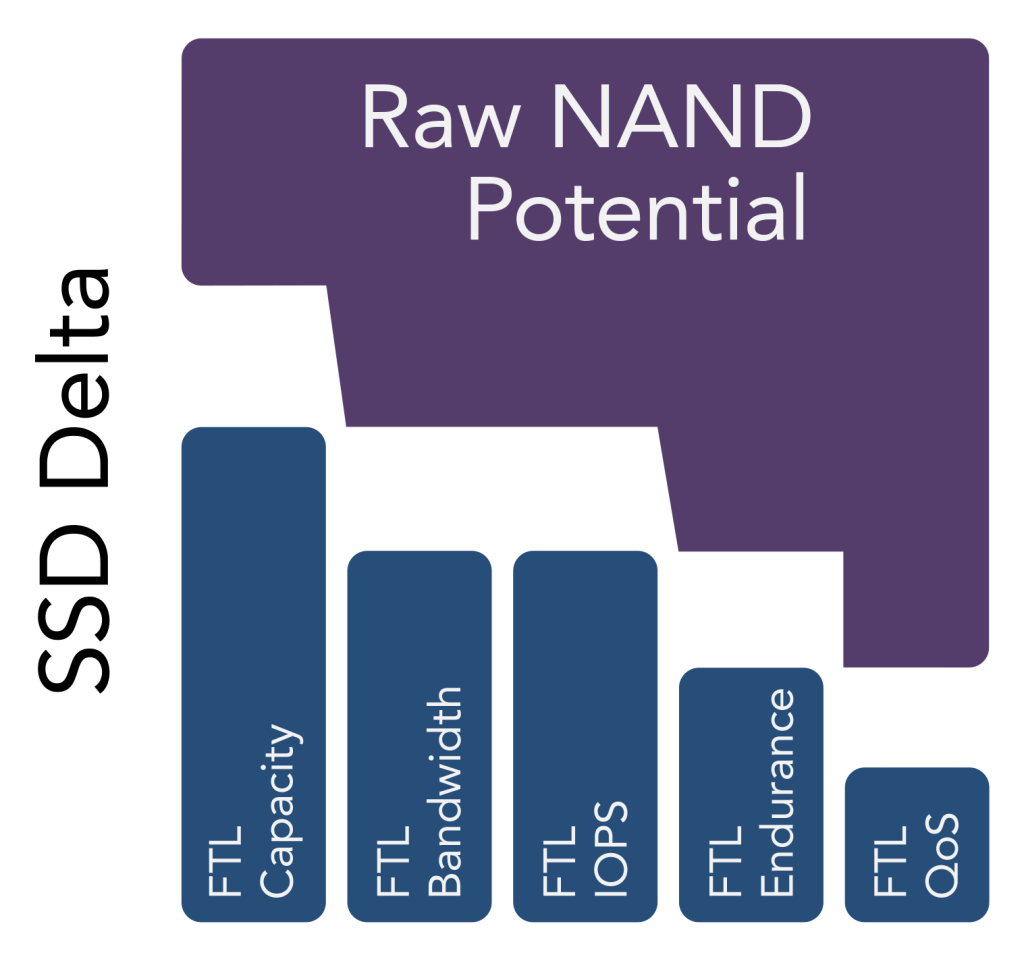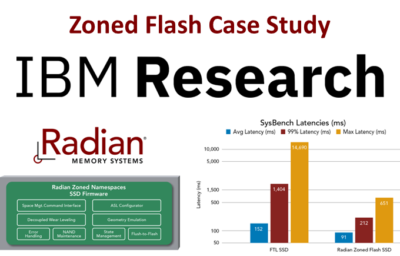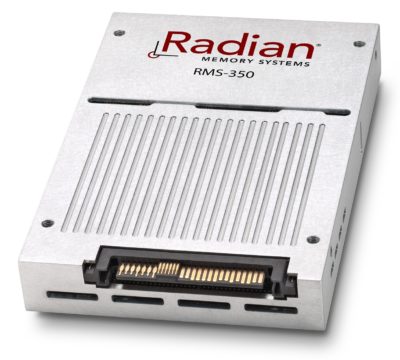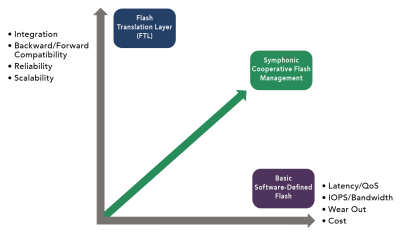Why can’t conventional SSDs deliver the capacity, performance,
or endurance of their own raw Flash?
FTLs and the SSD Delta
Utilizing NAND memory for data storage requires performing Flash management processes, such as garbage collection and wear leveling.
SSDs perform these processes transparently in a black box known as the Flash-Translation-Layer (FTL) that abstracts the processes and emulates hard drives for backwards compatibility. But this abstraction significantly reduces the native performance and cost metrics available from the raw NAND memory, creating a gap that we call the SSD Delta.

Challenges from SDF
- Difficult integration and significant modifications to target host software stacks
- Burdens host with low level NAND details
- Lacks Forward Compatibility and ties host software to geometry and vendor-specific NAND properties
- Lacks Reliability, Availability, and Serviceability features
- Poor scalability as SSDs are added to a system
Symphonic
As a subset of SDF, Radian’s Symphonic technology preserves the SDF advantages while specifically addressing each of the resulting challenges to provide the functionality required of a data center class product.




